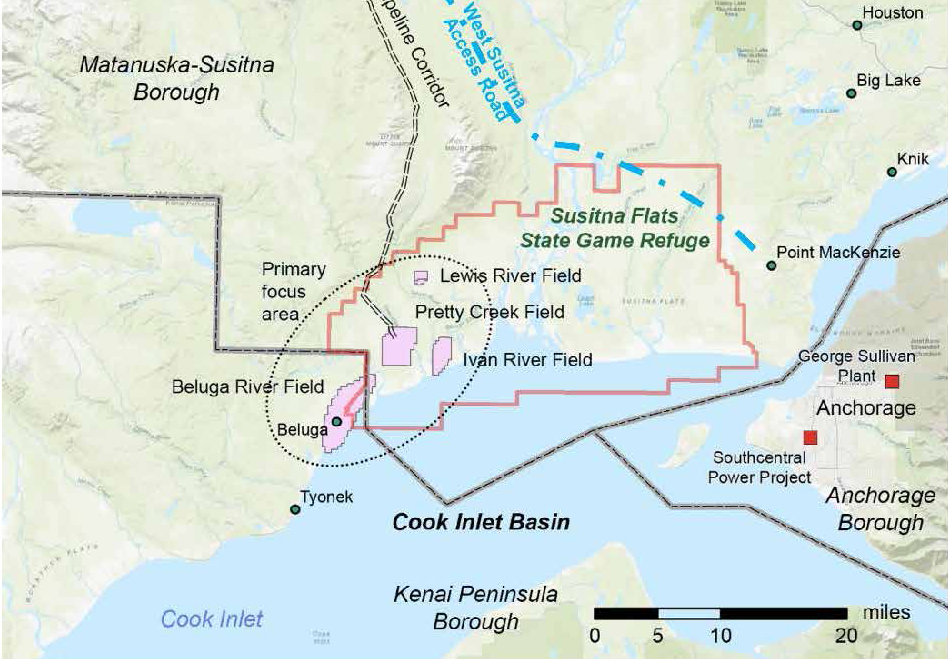Exploring Carbon Dioxide Storage for Alaska’s Railbelt Energy Future
The Alaska Railbelt Carbon Capture and Storage project (ARCCS) is a study evaluating the storage capacity and technical feasibility of permanently storing carbon dioxide (CO2) deep underground in the northwestern part of Cook Inlet. The project is screening deep geologic formations in depleted natural gas reservoirs near the Beluga River Field and nearby deeper saline aquifer formations for their potential as commercial-scale carbon dioxide storage sites. While the storage capacity is not yet dedicated to any particular project, the ARCCS project is evaluating CO2 pipeline transportation routes to this location from a proposed new biomass-coal power plant in West Susitna and from two existing Chugach Electric Association natural gas power plants in Anchorage.
Finding a carbon dioxide storage site in the northwestern Cook Inlet could unlock:
Economic value
Energy stability
Environmental stewardship
STEM inspiration
A carbon dioxide storage site in northwestern Cook Inlet could facilitate development of a proposed coal power plant with integrated carbon dioxide capture. This plant aims to reduce the Railbelt’s energy challenges by using locally sourced fuel. With more than 100 years of coal reserves, this plant would help stabilize costs and reliability of Alaska’s Railbelt (from Homer to Fairbanks) energy system, reduce pressure on natural gas supplies, and add always-available energy to shore up the electric grid when we need power.
ARCCS, if it proves up carbon storage capacity, provides options to reduce carbon dioxide output for projects. An ARCCS storage site would also provide options for carbon dioxide capture at other plants in Southcentral, including Chugach Electric Association’s natural gas power plants to reduce their carbon footprint. ARCCS also opens the possibility of capturing carbon dioxide from the six-coal fired powerplants in the Interior and transporting it by rail to Southcentral for storage in one managed facility, if a more local carbon dioxide storage site cannot be found.
What makes integrated carbon dioxide capture an important component is that some businesses, cities, states, and governmental units—whether local, state, or federal—see low-carbon energy as a desirable trait, potentially keeping existing markets open to Alaska resources and products, with the possibility of opening new ones, as well.

Visit our FAQ page to explore frequently asked questions.